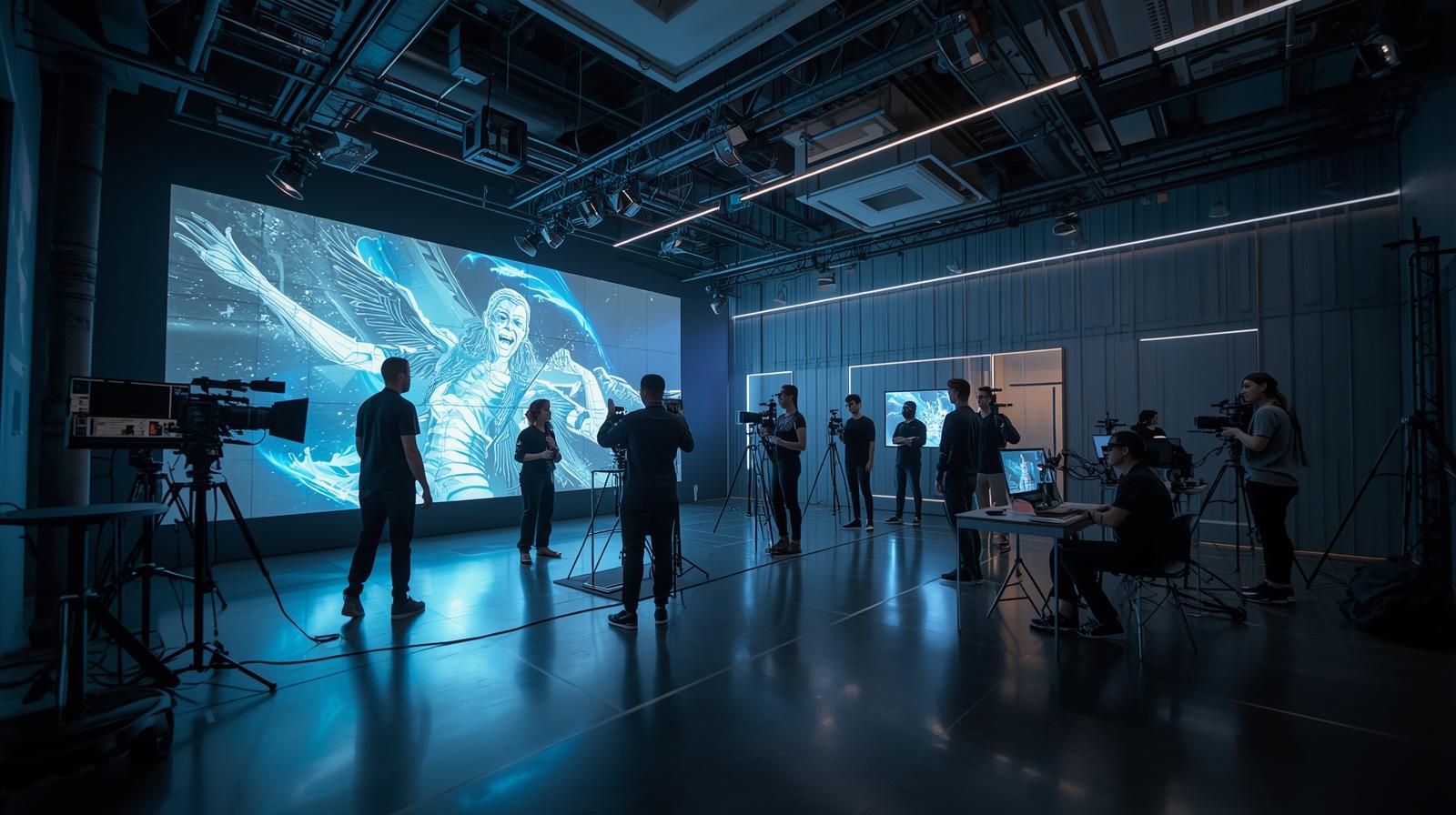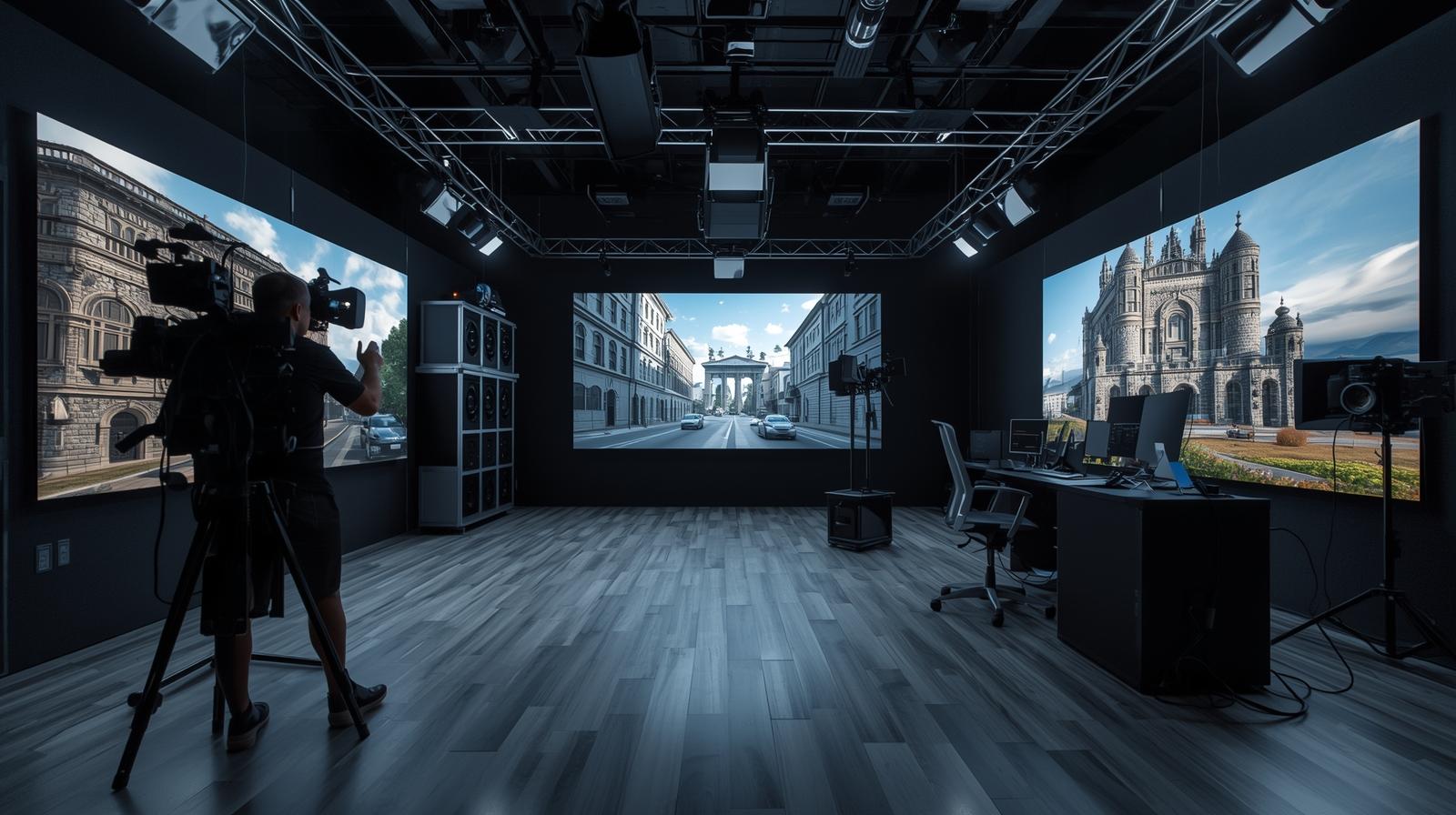The film and entertainment industry is in the midst of a seismic shift, moving away from traditional green screens and lengthy post-production cycles toward a more integrated, immersive, and agile process. At the heart of this revolution is virtual production, a technique that leverages real-time game engine technology to blend physical and digital worlds seamlessly. While its breakout moment was undoubtedly Disney’s The Mandalorian, this was merely the opening act. The future of the virtual production market is not just about bigger screens or higher-resolution LEDs; it’s about a fundamental reimagining of how we create content across multiple sectors. This article delves deep into the trends, technologies, opportunities, and challenges that will define the future of this dynamic and rapidly expanding market.
The global Virtual Production Market size was estimated at USD 1.52 billion in 2024 and is predicted to increase from USD 2.10 billion in 2025 to approximately USD 8.76 billion in 2030, expanding at a CAGR of 33.1% from 2025 to 2030.

Understanding the Core of Virtual Production
Before projecting into the future, it’s crucial to understand what virtual production entails. At its simplest, it is a methodology where digital and physical elements are combined in real-time during the filming process. This is a significant departure from the conventional linear pipeline, where visual effects (VFX) are added months after principal photography has wrapped. The centerpiece of modern virtual production is the LED volume—a massive, curved wall of high-resolution LED panels onto which photorealistic, dynamic digital environments are projected. Actors and physical set pieces are placed within this volume, allowing filmmakers to see the final composite through the camera lens as they shoot. This is powered by real-time rendering engines, like Unreal Engine and Unity, which generate and manipulate these digital worlds instantaneously.
Key Technologies Driving the Market Forward
The future growth and evolution of the virtual production market are intrinsically linked to advancements in several core technologies. These are not standalone components but parts of an interconnected ecosystem that must evolve in tandem to unlock new possibilities.
Real-Time Game Engines: The digital heart of the operation. Continuous development in engines like Unreal Engine is focused on achieving cinematic-quality graphics at real-time speeds. Future updates will bring even more realistic lighting, physics, and asset fidelity, further blurring the line between the real and the virtual.
LED Volume Technology: The physical canvas. The future of LED volumes lies in higher pixel densities (e.g., microLED), improved color accuracy, higher refresh rates, and more flexible, modular designs. This will allow for larger, more seamless screens and potentially even portable volumes that can be deployed on location.
Camera Tracking Systems: The invisible conductor. Precise, low-latency tracking of camera movement and orientation is non-negotiable. The future will see the rise of more robust, markerless, and AI-powered tracking solutions that work flawlessly in any condition, ensuring the digital environment responds perfectly to the camera’s every move.
AI and Machine Learning Integration: The new frontier. AI is poised to supercharge virtual production. From generating vast digital landscapes and assets automatically to optimizing real-time lighting and even creating digital humans, AI will drastically reduce the time and cost of creating complex virtual worlds.
The Expansive Future Across Industries
While born in high-budget film and television, the future of the virtual production market is one of radical diversification. Its applications are rapidly expanding far beyond the soundstage.
Film and Television: This will remain the core driver. The future will see virtual production become standard practice for projects of all scales, not just blockbuster epics. Independent filmmakers will gain access through stage rentals and more affordable technology, democratizing high-end visual storytelling.
Advertising and Commercials: The advertising world thrives on speed and visual impact. Virtual production allows agencies to create stunning, concept-driven spots in a fraction of the time, enabling rapid iteration and last-minute changes without costly reshoots.
Live Events and Broadcast: Imagine a news anchor standing in a dynamic, interactive data visualization, or a music performer sharing a stage with fantastical digital elements during a live concert. Virtual production will transform live broadcast, making it more engaging and visually spectacular.
Architecture, Engineering, and Construction (AEC): Professionals can walk clients through hyper-realistic, immersive renders of unbuilt structures. This allows for better design validation, stakeholder buy-in, and early identification of potential issues, saving time and resources.
Corporate Training and Simulation: From training surgeons in complex procedures to preparing pilots for emergency scenarios, virtual production offers a safe, controllable, and highly realistic environment for high-stakes training simulations.
Tangible Benefits Fueling Market Adoption
The rapid adoption and promising future of the virtual production market are fueled by a compelling list of advantages that offer a strong return on investment.
-
Unprecedented Creative Freedom: Directors and cinematographers can make creative decisions on the spot, reacting to a near-final image rather than imagining what might be added later.
-
Significant Time and Cost Efficiency: While initial setup costs are high, virtual production can lead to massive savings by reducing location travel, physical set construction, and, most significantly, expensive post-production VFX overhaul.
-
Enhanced Actor Performance: Actors can perform within the actual environment their character inhabits, seeing the fantastical world around them rather than acting against a blank green screen. This leads to more authentic and emotionally resonant performances.
-
Superior On-Set Collaboration: The entire creative team—from the director and DP to the VFX supervisor and production designer—can collaborate in real-time, looking at the same final image and ensuring a unified creative vision from day one.
Navigating the Challenges on the Horizon
Despite its bright future, the virtual production market must overcome several significant hurdles to achieve widespread mainstream adoption. The initial capital investment for a full-scale LED volume and the required computing infrastructure is prohibitively high for many studios, creating a barrier to entry that limits access primarily to large players. Furthermore, there is a critical and growing skills gap in the industry; the market desperately needs a new breed of hybrid professionals who are equally versed in traditional filmmaking principles and the intricacies of real-time game engine technology. This talent is currently rare and in high demand. Finally, as with any technology-driven process, there are inherent technical limitations and workflow integration challenges. Issues like rendering constraints for incredibly complex scenes, achieving perfect color matching between the physical set and the LED wall, and developing streamlined data management pipelines between pre-production, on-set operations, and final post-production are all active areas of development that need to mature for the market to scale efficiently.
Download PDF Brochure @ https://www.marketsandmarkets.com/pdfdownloadNew.asp?id=264844353
The Future is Integrated and Accessible
Looking ahead, the future of the virtual production market will be defined by integration and accessibility. We will move beyond the singular LED volume stage to a more holistic approach where virtual production techniques are used in a hybrid fashion. For instance, a production might use a large volume for key scenes and smaller, mobile LED screens for driving shots or special lighting effects on a practical location. Cloud-based rendering will also play a pivotal role, allowing teams to offload heavy computational tasks to remote servers, thereby reducing the need for massive on-site computing power and enabling broader collaboration. Perhaps most importantly, the technology will become more accessible. We are already seeing the emergence of smaller, more affordable LED panels and more user-friendly software interfaces. This democratization will empower indie creators, educational institutions, and smaller agencies to experiment and innovate, pushing the creative boundaries of the technology in new and unexpected directions. The future of the virtual production market is not just about bigger and better tech; it’s about embedding this transformative workflow into the very fabric of visual content creation across the globe.

A Paradigm Shift in Creation
The future of the virtual production market is exceptionally bright and extends far beyond a fleeting trend. It represents a fundamental paradigm shift in how we conceive, produce, and experience visual media. This is not merely a new tool but a new language for storytelling—one that merges the best of physical craftsmanship with the infinite possibilities of the digital realm. As the technology continues to evolve, becoming more powerful, integrated, and accessible, its impact will ripple through film, television, advertising, and numerous other industries. The organizations and creators who invest in understanding and mastering this convergence of art and technology today will be the leaders defining the creative landscapes of tomorrow. The virtual stage is set, and the future of the virtual production market is already in motion, promising a new era of limitless imagination and unparalleled efficiency.
Explore In-Depth Semiconductor & Electronics Market Research:
https://www.marketsandmarkets.com/semiconductorand-electonics-market-research-87.html
FAQs
1. What is the biggest driver for the future growth of the virtual production market?
The biggest driver is the compelling combination of significant long-term cost savings (especially in post-production) and the unprecedented creative freedom it offers filmmakers and content creators across industries.
2. Will virtual production make location shooting obsolete?
No, not obsolete. The future is one of hybridization. Virtual production is ideal for controlled environments, fantastical worlds, or complex visual effects shots. However, location shooting will remain crucial for authenticity, specific natural environments, and projects where the practical reality of a location is irreplaceable.
3. How is AI expected to impact the future of virtual production?
AI will be a major accelerant. It will be used to rapidly generate digital assets and environments, automate tedious tasks like rotoscoping, enhance real-time lighting calculations, and even create highly realistic digital humans, making the workflow faster and more accessible.
4. Is virtual production only relevant for big-budget Hollywood productions?
Not anymore. While pioneered by high-budget projects, the technology is rapidly becoming more accessible. Smaller LED volumes, rental stages, and cheaper software are now allowing independent filmmakers, commercial producers, and even other industries to leverage its power.
5. What is the main challenge hindering the adoption of virtual production?
The primary challenge is the high initial capital investment required for the hardware (LED walls, powerful workstations) and the significant shortage of skilled talent who can bridge the gap between traditional filmmaking and real-time engine technology.
6. How will virtual production change the job market in the film industry?
It will create new, hybrid roles (e.g., Virtual Production Director, Real-Time V Artist) and require traditional crew members like cinematographers, gaffers, and production designers to acquire new skills related to working within a digital, real-time environment.
See The Latest Semiconductor Reports:
Quantum Computing Market Size, Share & Trends : https://www.marketsandmarkets.com/Market-Reports/quantum-computing-market-144888301.html
Cold Chain Monitoring Market Size, Share & Trends : https://www.marketsandmarkets.com/Market-Reports/cold-chain-monitoring-market-161738480.html
Printed Electronics Market Size, Share & Trends : https://www.marketsandmarkets.com/Market-Reports/printed-electronics-market-197.html
Head-up Display (HUD) Market Size, Share & Trends : https://www.marketsandmarkets.com/Market-Reports/head-up-display-hud-market-684.html
Mining Automation Market Size, Share & Trends : https://www.marketsandmarkets.com/Market-Reports/mining-automation-market-257609431.html
